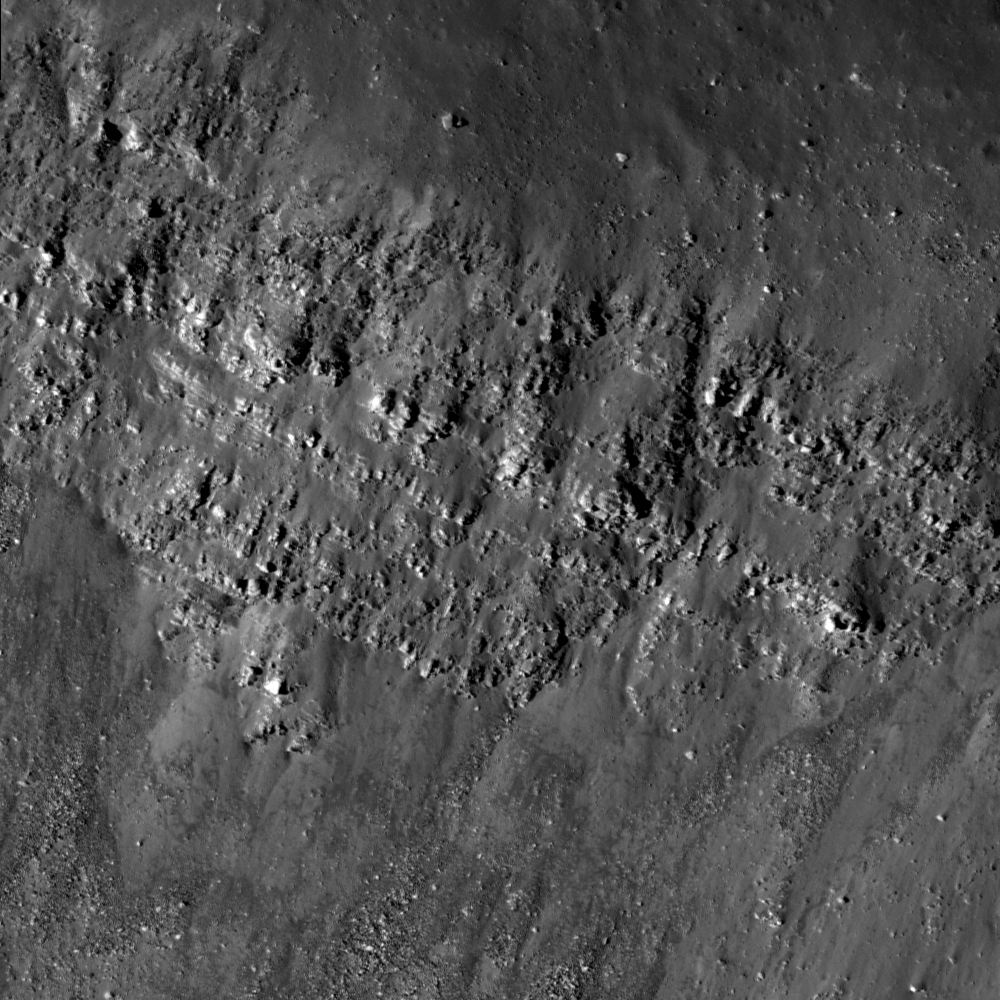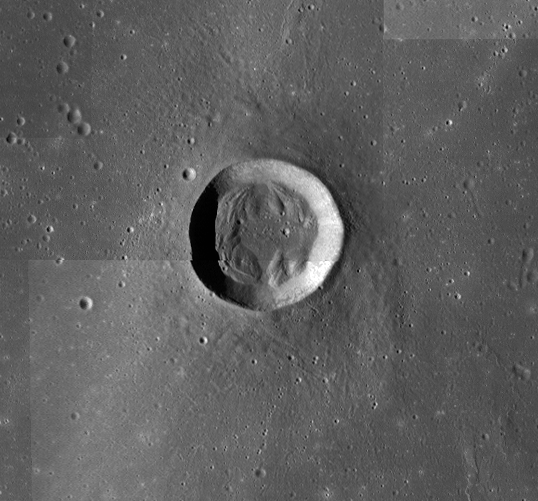
The outcrops exposed on the interior wall of Bessel crater (~16 km in diameter) are remarkable since they are most likely preserved layering of mare basalt. Today's Featured Image shows a portion of the northern wall, which contains multiple layers that probably represent discrete lava flow deposits in Mare Serenitatis. Over time, large, but relatively thin, lava flows spread across the extent of Mare Serenitatis. Lunar pits imaged by LROC also give us a good look at basalt flow layers. Boulders broken off of the mare layers tumble down the wall toward the floor of the crater. Bessel crater is named after Friedrich Bessel, the developer of Bessel functions. By measuring the thickness of layering found in Bessel and other craters, scientists can put constraints on the thickness of individual lava flows. What else can Bessel crater tell us about Mare Serenitatis?
Explore the entire NAC frame!
Related images:
Dark streaks in Diophantus crater
Published by Sarah Braden on 19 April 2011
